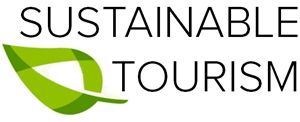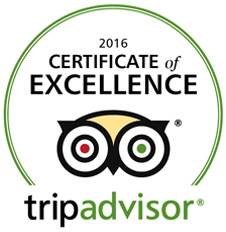The itinerary below is a sample. Hiking times are an average and will vary depending on the group. Additionally, lunch and camp sites may change to meet the needs of the group and conditions.
Pre trek
The day before the trek, your guide will meet you at your hotel for an in-depth briefing. This provides an opportunity to ask questions and do any last-minute shopping before leaving Cusco.
Day 1: Cusco-Cachora-Rio Apurimac
The day begins with a three-hour drive through the mountains from Cusco to the trailhead at Cachora (2900m). Here we meet our wranglers and pack animals. We descend through lush countryside with good views of snow-capped mountains and into the canyon of the Rio Apurimac to camp for the night.
7 hours walking, 2,900-1,550m
Day 2: Rio Apurimac-Choquequirao
Today is a difficult but rewarding day as we cross the Rio Apurimac and climb to Choquequirao (3100m). Along the way we will pass the communities of Santa Rosa and Marampata, as well as see a waterfall and abundant orchids. We camp near the ruins.
6 hours walking, 1,550-3100m
Day 3: Choquequirao
The whole day is devoted to fully exploring the ruins of Choquequirao, much of which is still unexcavated and covered in dense forest, giving the modern explorer the opportunity to experience what the site was like when mapped by explorers such as Hiram Bingham. In the morning we visit the lower portions, including farming terraces and communal areas. After lunch, and perhaps a siesta, we will return to the site and visit the upper portions where the most important shrines are, including seeing the recently-discovered place of the llamas.
Day 4: Choquequirao-Rio Blanco
We leave Choquequirao and climb a steep trail through the cloud-forest to the Choquequirao pass (3250m). The trail then descends along an old water canal to the Inca terraces of Pinchiunuyoc. From here we continue to descend, entering a drier environment characterized by small bushes and open areas, from which we can see Mount Victoria.. We camp by the Rio Blanco.
5 hours walking, 3100-3250-1900m
Day 5: Rio Blanco-Minas Victoria
This is another challenging day. Leaving the river in the morning, we begin another arduous ascent. The climb is varied, however, as the landscape changes once again from scrub land and bamboo to cloud forest. Here we begin to see the Victoria silver mines used by the Incas and later by the Spanish. These mines, consisting of small tunnels in the cliffs, are not mined commercially but farmers from the valley beyond often try their luck. We camp at a small meadow called Minas Victoria, a beautiful camp with views of the canyons we just climbed and the surrounding snow-capped peaks, providing the perfect backdrop for a relaxing evening.
7 hours walking, 1900-3850m
Day 6: Minas Victoria-Yanama
Leaving camp, we follow a well-preserved Inca road the last hour to the pass. Climbing higher, the cloud forest gives way to Andean puna before the San Juan pass (4200m), where on a clear day there are incredible views of the Vilcabamba range, including the snow-capped peaks of Choquetacarpo and Pumacsillo. We pass by more silver mines and descend along an Inca trail that hugs the cliff-side high above the valley to the isolated village of Yanama (3500m). Camp there.
5 hours walking, 3850-4200-3900m
Day 7: Yanama- Qelqa Machay
From Yanama we walk downstream through sub-tropical rainforest filled with many interesting plants, including several species of orchids, and then out on exposed hillsides with views of granite spires and snow-capped mountains. After resting by the Rio Yanama, we climb a ridge from which we can see Mount Victoria, the San Juan Pass, and the Choquequirao mountain behind us.
We continue hiking with steep rock cliffs of the Pumacsillo range on the left and follow a small stream through meadows to Qelqa Machay (3900′), a cold but beautiful camp, surrounded by mountain vistas.
Day 8: Qelqa Machay- Huancacalle
In the morning we follow a wide Inca road, one of the best preserved in Peru, over the narrow rocky Abra Choquetacarpo (4650m), the highest pass on the route. After admiring the view, we continue following the Inca road, descending hundreds of steps into a lush valley. Crossing the river, we hike past the bogs and to our camping place, Huancacalle (3600-3800m).
After lunch, we will have ample time to visit the nearby archaeological sites of Vitcos and Ñustahispana, which played a role in the last days of the Incan Empire. In the evening, you can celebrate and relax with visits to shops, restaurants, and bars of Huancacalle.
Day 9: Huancacalle – Aguas Calientes
After breakfast our van is waiting for us to take the 3 hour trip back to Santa Teresa, possibly stopping to see coca plants on the way, traveling along the Rio Vilcabamba to Chaullay, on to Hidroelectrica, where we catch the train to Aguas Calientes on to the comforts of your hotel.
Day 10: Machupicchu – Cusco
After enjoying the tourist amenities of Aguas Calientes and getting a full night’s sleep at a hotel, we catch one of the first buses to Machu Picchu in order to see the awe-inspiring view of the ruins at sunrise. After a two-hour guided tour, you will have free time to climb Huayna Picchu, explore the city, or simply relax. In the early afternoon we take the bus back down to Aguas Calientes where you catch the train to Cusco.

















